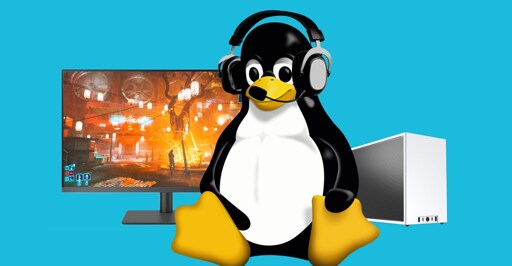In general:
W11: fire up office, oops wait, it wants to set itself as default and for some reason needs you to buy a one drive subscription for that. How about some copilot? Are you sure? How about we wrap it in edge? Oh, but you can install Libreoffice by all means, but it’s not going to be the default app right? RIGHT?!!!
Oh you want to save the file to your harddrive? Look, how do I put this,… there is no more harddrive.
Linux: type one line in the terminal and there you go. Write a novel if you want.
“It came out of the box this way. I hate it but I paid good money for the device I own to tell me what to do!”
Me after using the KDE: how the fuck Linux is better Windows than Windows?
They were supposed to focus on window managing, ITS IN THEIR FUCKING NAME. Instead you need extra things like Powertoys for basic functions that KDE has integrated.
Yus!
That was so my take too, in 2003.
I switched because of WinXP, that insane bloater chewing up resources I could have been using for my art tools if not for their squander on pointless shiny.
So then, in SuSe, with KDE, it had even better shiny, useful shiny, not pointless, and it didnt run 10x slower than 95/98/NT/2000, like XP did, but instead ran 10x faster!
There was no going back to being abused by M$ after seeing that.
If we had fast windowing systems back then, why is modern KDE slower than XP?
KDE4. Plasma. The fattiest FOSS has to offer.
Worth looking at Trinity (KDE3 fork/continuation).
XFCE looks like it’s trying to go from lightweight to fattiest some upgrades too. Still, very elegant, and you wont notice that on new beefy hardware. But on ancientware, … best stick to LXDE, or even just openbox, or any other window manager, pretty much.
IceWM, calls itself a window manager, but it seems to cover all the main basics for a desktop environment feel.
There still be places to go to get the light, fast and shiny in FOSS, even if KDE went nuts around 15 years ago (whenever KDE4 was).
KDE is the best desktop environment I’ve ever had the pleasure of using. So much better than Windows at everything I want out of my desktop!
I still like Cinnamon better. To quote Jeremy Clarkson, “This is brilliant, but I like this.”
What does Cinnamon have that makes you like it over something like KDE?
I’ve often compared Gnome, KDE and Cinnamon, and it usually boils down to KDE is often too complicated and busy, Gnome is often too simple and braindead, Cinnamon sits somewhere in the middle.
Gnome’s settings menu is missing a lot of things you’d think should be there. They don’t want you changing things, so you end up installing separate packages like gnome-tweaks to actually render the OS usable. They’ve got this weird attitude that they’re going to out-Apple Apple with a millionth of Apple’s budget, and where Apple offers “Just Works”, Gnome offers “Barely Does Anything.”
KDE has the opposite problem, they’ve got a setting for literally everything, if you can find it in their overgrown single settings menu. A basic applet will have several tabs crammed full of options and UI elements, making it probably the best tool for whatever mundane task it was meant for but you have to stop and figure out how it works, and it’s all rendered in janky misaligned QT so it looks like an amateur reskinned Windows 98.
Cinnamon inherits a lot from Gnome, but puts back in the shit Gnome gouged out. I tend to find things where I think to look for them, it tends to provide the functionality I need out of the box without excessive clutter. But, it’s a bit behind the times with stuff like Wayland, so it’s not the best choice for very modern hardware.
Honestly W11 window management by default is better than KDE right now.
This was true for W10, but not any more.
KDE window outline defaults (don’t have a generic name for setting up the snap zones) take way more effort to set up than the windows version.
I don’t think requiring powertoys for extra features matters that much because its supported by the same company. In my opinion, when having something not default truly sucks is when its third party and is finicky and fickle because it requires developers developing vs a moving target.
When its an internal team, they have much more knowledge about how that target will be moving.
Anyhow, that is to say, I think KDE is great, and completely competent, and I love the level of customizability by default, but it certainly has many flaws. Of course its biggest flaw is not its own fault, but that of the catch 22 situation needed to gain critical mass, and the average linux proselytizer doing everything in their power to ensure people don’t want to try linux by somehow imagining themselves to be the every user, and constantly doing that annoying thing where they both say linux is powerful, and that the faults dont matter because the average user doesn’t use any of said powerful features or they themselves, personally got used to the faults.
in 2 decades of using KDE from time to time, the biggest flaw (besides how they released KDE4 way too early and distros picked it up), is how it’s never perfect. fix one bug, add another. add a new feature, break an old feature. always feels like there’s just one little irk hiding somewhere.
Having to install powetoys on top of the OS makes it DOA for many on corporate environments. You get stuck on approval limbo or if someone else went through the pain, you discover it breaks every once in a while due to missing .net dependencies that you don’t have the right to install. I’ve seen this for both development (w10 w/ extended support) and thin clients (w11).
Unfortunately our clients all use Windows development machines, so we are stuck on the same to be able to write the guides and documentation. Most of our scripts now rely on Got bash since we know that’s available. MS environments are hostile to proper scripting and automation.
Oh yeah? Can you pin windows? Can you have windows always under the others or above them? Can you manage the buttons in the top ribbon? And dont even start with custom layout or the magnetic attach of windows in KDE.
I didn’t download powertoys for fun. I needed a feature the windows did not have build in. After using KDE, even powertoys look basic to me.
Edit: Just remembered windows opacity, custom windows rules for almost everything and many more settings.
After using KDE, even powertoys look basic to me.
I think this is quite a bit exaggerated no? KDE lacks many of the tools Powertoys adds like the OCR, advanced clipboard, colour picker and more.
Also, yes, pinning windows on top exists.
I am comparing KDE with windows 11 in window managing. Powertoys has many tools but for window managing only the pin to top and fancy zones count. Pin windows only exist with Powertoys, not stock windows 11.
My comment was particular in what it was in response to.
I quoted the section of your comment that was relevant:
After using KDE, even powertoys look basic to me.
Yes in window managing they are (windows not the OS Windows).
Heh, could play that game all day.
The biggie, can you fork it, can you mend it, etc. Free Software ftw.
I guess, I won’t do the classic “haha you have to run console to install an app” meme because I know there are distros that cater to Windows users like myself, the problem I find is that most software I’d want to use wouldn’t be supported like video editing and stuff I care about, I’m glad to see Linux rise because only then Microsoft will learn, but also there’s not a BIG issue that’s keeping me away from using Windows for now.
It might change who knows.
Just be forewarned:
Nvidia requires a bit of work.
SeLinux….it is a giant bag of gotcha.
That all said I’m not regretting my conversion.
I’m using tumbleweed and getting my NVIDIA card to work was some effort but only because I was an idiot and didn’t run the SUSE update tool that would have fixed everything for me :-/
:)
Nostalgic for me.
I started on suse in 2003, with nvidia. No problems had. Suse made things easy long before ubuntu came along pretending it was the first to make Linux easy.
OpenSUSE always seemed underrated IMO, especially in those pre-Ubuntu days. Such a polished UX overall
I use Linux Mint and Nvidea and never had any problem what so ever with it. But maybe i just have been lucky.
If you haven’t had to deal with kde plasma for your needs, then yes: consider yourself lucky cuz more than two settings on the bios needs to change as well. And that’s not even going into the dual boot scenario. Which is fresh hell. Especially with the most recent upgrades with locks and dynamic cards. And learning that every motherboard handles it differently even if you have matched all other types of hardware.
Just a reminder everyone’s needs are different. And some of this is way easier on windows if you’re arguing at just out of the box working
Not that I’m regretting going Linux. I’m just regretting the fanbois who are insufferable and obnoxious since coming to Linux. Really rides on my patience after several installs and learning all this by hand.
So many reveal that after I put the foot down all they did was just install to do some real basic shit and call it easy. They know nothing and need to sit down. Either help or Shut up, let people work through their required build.
We can be better than this.
I have an Nvidia card and run plasma and everything “just worked” for me including the proprietary drivers. Zero configuration (I am using CachyOS but Manjaro was fine as well as mint).
Figured I would add another data point for those thinking about switching but are nervous about the Nvidia support.
I use Linux Mint and Nvidea and never had any problem what so ever with it. But maybe i just have been lucky.
I use Linux Mint and Nvidea and never had any problem what so ever with it. But maybe i just have been lucky.
Me no use Mint, but the only problem I get is the sleep bug (waking from sleep results in a black screen). I’ve looked into it a few times and all I can assume is it’s probably nvidia so I gave up on solution hunting and pray one day it’s fixed (it’s getting slightly better over the years or maybe thats a placebo idk, it seems to fully break quite rarely now).
After my pc sleeps I usually have to switch sessions with ctrl+alt+<fn key> then back to the one running KDE and it (nvidia?) revives itself and I can keep working on watching my movies.
Just sharing my experience because mby someone smart here is thinking “yo yur dumb just do this”, but honest it’s not a big deal for me anymore.
Oh wait I wanna add that apart from this (tiny in my opinion) bug, everything esle has been smooth, even some gaming (it’s possible im in a rare state to be getting this bug since I haven’t reinstalled my root partition in like 5+ years, even tho I have swapped distros a couple times).
Possibly not a “solution” (or workaround rather) you want, but… I just switch all that stuff off.
The cool thing about Linux and FOSS is “many eyes make all bugs shallow”, and so if you search for the issue, someone else may have already reported it, in the community, or even in the issue tracker, and if not, you can do that, to help others, and then the developers (which can be anyone, even you, btw) can have a better handle on how to mend it.
Every problem, an opportunity, to give back. That’s how we got here, in these 4 decades since Richard Stallman announced the start of the GNU project.
What stuff do you switch off? (Did you have this bug previously?)
I tried researching this issue a while ago, it was hard to find anything, but it’s not a bug worth spending any more time on unfortunately since it’s an easy fix whenever it happens.
Wish I was smart enough to contribute hehe, sadly don’t even have the time anyways to sit down and figure it out (someone might already be figuring it out, it’s slowly getting rarer and rarer that the bug occurs, still at least one every other day, though much better than the at least multiple times a day from before).
stuff like
xset s off xset -dpms xset s noblankand/or there may be other ways in guis to do so too.
can put that in some startup shell bobbins, or wherever its supposed to go in configs. but i tend to just run it in terminal (from fish history) once it bothers me enough to switch it off. … am not on my usual computer just now, so i had to look that up. plucked that from 2nd result of a websearch for “x11 noblank off”.
I’ve looked into it a few times and all I can assume is it’s probably nvidia
It’s not, I have something very similar and I have a Radeon.
Oh interesting, I guess a general bug then.
This is over many years so memory might be bad, but I never had this on my old rx 580, then started getting it sometime after swapping to an nvidia gpu. Guess it was just coincidence, if I’m remembering it right anyways. That always fueled my suspicion it was nvidia.
Thanks for sharing your experience, it’s eye opening. I guess I have no problems specific to nvidia then (pre and post open source driver).
p.s. if you have ever looked into this, do you have something you blame?
I poked around the Net a bit here and there, tried a couple different solutions people suggested, but the only thing I managed to change was that the moment I clicked “Sleep”, the image on my monitors would completely freeze (as in: screens on, desktop and applications on full display), and the only solution was to do a hard reboot.
So, basically, I just stopped clicking “Sleep”… :D
Lol thats a good solution.
I haven’t seen anything like that happen to me luckily, I can sleep fine, but on wake it’s a black screen with my cursor (luckily² this is recoverable without rebooting).
Probably not even mint-specific since it happens on pop os too
I had that on Kubuntu, Tuxedo OS and now I have it on Garuda Linux, so yeah.
Yeah, really do it ok? Not only are you helping yourself, you’re helping everyone by shoving it up the clueless execs at microsoft who still have no idea why people dislike their stupid spy AI thingy.
“Tech journalists” installing linux in 2025 like it’s this hot new tech is not exactly the early adoptership I’d expect from them :)
I felt late to the party in 2003. Been quite the ride watching others suffer windows this long yet.
For ~97% of the computer using population it is a hot new tech.
Compared to the state of consumer-grade Linux 5 years ago to today, it’s absolutely a hot new tech.
One cannot understate the impact that the Steam Deck and Proton had on driving consumer-friendly features to Linux simply from the demand of an exploding user base.
Alas, argumentum populum is no valid vindication nor excuse.
“Anybody here work in advertising or marketing?” [–Bill Hicks, and the rest of that bit] hints at the reason though.
This right here. Got a Steam Deck. My Surface Pro 4 finally died. So after years of hassling from my best friend, who runs Arch btw, I got a Framework 13 and put PopOS on it. Zero issues, to the point, sadly, where I haven’t really learned to troubleshoot it much yet. We’re gonna install Bazzite on my home theatre PC this weekend when he comes down.
The only Windows I’m gonna run from here out is on my work PC, and the AI shilling, spyware, and cloud requirements sure ain’t changing my mind.
Be forewarned, Bazzite has some install issues and can lock up or appear locked up during a painfully long install process. Also, VR support is meh on Bazzite and their immutable distro and managed packages make it more challenging to get non-managed solutions rolling.
As somebody running Bazzite and loving it on their HTPC, I am looking at switching to CachyOS using the Handheld (SteamOS) Display Environment or launching directly into Kodi.
Well there’s always dual booting. I’ll consider VR again one of these days, maybe. I early adopted the Oculus Rift way back, but I’ve never had the space for full motion and stuff. Did a fair amount of space travel with it though. That was nice.
Truly. I honestly feel like a lot of the linux oldheads got off on being part of an exclusive club and actually hated when things became easier to use (hence all the crying whenever anyone who isn’t literally a cis admin or c developer points out the glaring UX flaws that plauged and still plagued linux).
Steam has the money to both fix a lot of problems and bulldoze through the wave of elitist condescending douches that typically inhabit linux spaces.
On top of that, and I know this part will get hate, now with LLMs, a lot of the questions that would get you absurdly rude and defeating remarks, you can just ask an LLM and get on average more accurate answers and less hazing for no reason. Yes, I am saying that LLMs give more accurate responses, as that has been my experience when it comes to asking questions on forums vs them.
And just to be clear, I have always been the type of person to ask questions as a last resort because I can’t deal with those people and don’t think being hazed should be a necessary part of doing power computing. You shouldn’t need a thick skin to fix a driver issue for instance.
Anyways, I do think that these things have made linux far more approachable, but common apps being supported is still something that needs focus. Like the only CAD options for linux are what, freecad, where its free because you pay with your time and frustration, SolveSpace… or onshape, which is simply not viable for hobbyists who at all ever want to make any money from their hobbies?
The same is true for video editting where there are absolutely some first class programs that run on linux, but the media creation pipeline also clearly has adobe shaped holes (just to be clear, though I feel it doesn’t need stating, I do hate adobe).
Yeah the elitism thing is detrimental because it drives newcomers away. The more people who get interested in linux and start using it the better.
Every time anyone rejects Microsoft’s shitty bloatware/spyware it’s a win. I just converted a few months ago. Win11 is going to push more and more people away.
Ive been getting a taste of linux setting up a few raspberry Pis. Its been really fun and it got me looking at installing a linux distro on my PC. Probably ubuntu or ive heard good things about mint.
That is EXACTLY the path I took. I started playing with a Raspberry Pi as part of my ham radio hobby, a Pi 1B in those days. Then my old laptop died, I bought a new one from Dell, which came with Win 8.1, and it kept dying. While going around and around with Dell’s tech support, I pretty much had to use that Pi for my normal work. I got a pretty good crash course in Linux, to the point it was more familiar to me than Win8.1. So I tried Ubuntu, it was okay, I tried Mint, and that was my home for the next ten years.
If you have amd in your system mint is a pretty great choice.
The only thing that sucks about switching to linux is moving my external NTFS USB drives to my new linux server.
Linux HATES NTFS, hates usb drivers, and hates external drives that aren’t formatted to ext4. fstab doesn’t work for my WD Elements, so i just gave up and shucked the drive and put it inside.
I can’t fit 5 3.5" hard drives in my SFF dell 3070, so i’m stuck on windows right now, but they keep doing random updates the last few weeks and my windows explorer freezes constantly and my computer barely works. So i’m going to have to switch to linux and possibly reformat all 36TB’s to ext4. Not excited about that at all.
So either reformat all my external drives, buy a very expensive NAS with an external SATA port and hope my motherboard recognizes them.
Best desktop in the world, no joke.
*Least terrible
If yours is terrible then that’s a skill issue tbh
Can’t device if upvote because it’s correct or downvote because it’s harsh. Come on we are the penguins, we are FOSS and open source, no skill-shaming. All are welcome.
I’m not trying to gatekeep, I just feel like having a “terrible” experience is quite hard to achieve
Being fanboy elitist is not helping. In fact it’s cringe. Don’t be cringe.
I will remind you : Nvidia is not easy on Linux. And so far as my research it never has.
Windows you don’t have to think about it.
That said, there is good help on it.
So help.
Be part of the solution. Not the problem. And especially don’t be another problem.
I will remind you : Nvidia is not easy on Linux. And so far as my research it never has.
So far for me, NVidia has been easier on Pop OS than on Windows. The proprietary NVidia driver comes pre-installed on Pop OS downloads (the ones intended for NVidia).
If we compare from bare metal:
Windows: download the OS, prepare the media, install the OS, look for the correct driver, download it, install it, make sure to avoid the unnecessary junk that comes with the driver.
Pop OS: download the OS, prepare the media, install the OS.
Edit: It’s early days still though. Only installed it this week.
kde plasma, changing the explicit driver is not such an easy task. And have to manually mess around with nouveau
Or have a card that needs the bios set before defaulting nvidia for plasma.
stuff you never ever have to think about on windows.
Linux is not something that works out of the box for every need.
Not a stab on Linux but this is more of a stab at the fanbois really gotta back down from gatekeeping as this is what I find the cringiest about Linux user base. Which I’m part of now so I see it as my duty to call this shit out and tell them to knock it off. It is full on obnoxious.
Got you, I understand now that you were more countering Linux fanbois than putting down Linux itself. In any case, I’m not sure I understand several of your points and would like to understand them better.
Are you saying that you prefer KDE Plasma, so that Pop OS being based on Gnome is a non-starter? On a related note, if you haven’t yet, take a look at the Pop OS beta for their COSMIC desktop. It’s kind of in-between KDE and Gnome and written in Rust. It’s more like gnome, but has more features and allows more tweaking out of the gate. Plus it seems very fast. It’s pretty close to being released, I think I heard December 11th or some date around that?
What do you mean about changing the explicit driver and manually messing around with nouveau? How about the bios setting part?
I feel that Linux can work pretty well for a lot of people. Sure, nothing works for everyone though.
Windows you don’t have to think about it.
To be fair, that’s only because most people are trained on windows first and use it for decades, so the annoying Windows quirks and defects have been embedded into you (their workarounds too).
Nvidia is not easy on Linux
I think this problem is mostly solved, for newer cards at least. But I guess I have to agree since older nvidia gpus will be stuck on the terrible old proprietary drivers (though idk maybe the older ones have better support because theyve been around).
It is terrible indeed, but I’d rather say that is because linux development is not focused enough on the desktop. KDE does a decent job out of the box, but still cracks in too many corners (still, after so many years…). GNOME looks cool but has terrible usability. People praise it for its design, but none of those people are designers or have any idea about design beyond color combinations. I know, your obscure other window manager is great and I will try it out soon.
I’m a bit optimistic that things will get better eventually. We have a decent service manager now and half-standardized packaging solutions. It also seems like the biggest pain with X vs. Wayland is over. Things kind of work, but it’s far from a good desktop experience.
Terrible still, but dude I’m happy I’m over here and not in one of the other camps right now.
BREAKING: Man decides to install Linux.
More details to come.
“I deleted the recycling bin folder named /bin/ and it just froze what do I do?”
Freeze? Nah, it’ll keep chugging along 'til you reboot (or otherwise try to run a new program), and then won’t be able to start.
This is what happened when I deleted the root directory in high school.
You need to remark your files !! Just runsudo rm -Rf /FYI to new users… Do not run any command without knowing what it does. Especially that one. Not even if they say “don’t worry, rm prevents you from deleting your hard drive’s contents now”, … like I fell for, 21 years ago. Doh!
FYI to old users… Stop telling people to do that. It’s not funny. Getting new users to delete their root directory… not cool.
you’re not wrong …
I am glad to see articles like this. For too long I have seen articles saying “sick of this windows bullshit??” Only to find advice on workarounds in windows, or suggestions to use a console, or a fucking phone app. For too long Linux has been treated like the evil twin locked in the attic, never to be spoken of or acknowledged.
IT IS TIME! TIME TO ANNOUNCE WE HAVE RELEASED THE LINUX AND IT WAS THE GOOD CHILD ALL ALONG! BART WAS THE EVIL ONE AFTER ALL! LET IT BE KNOWN!
To be fair (even though I also am both happy and relieved to see articles like this), just because you convert to Linux, that doesn’t mean everyone else will. I have used so many guides to help debloat windows computers, and turn off nonsense I don’t want (mostly so I can use proprietary software for work). My choice to not use windows in my personal life on my personal devices doesn’t really change my situation with needing those guides to help others circumvent windows BS.
I wish we didn’t have to live in interesting times and all that, but the guides are helpful.
BREAKING: Man breaks Linux, installs another distro, and lives happily ever after.
BREAKING: Man announces he runs Arch, btw
That’s like eating exactly one potato chip.
Ohhhhh boy. I surfed over a thousand distro ISOs. Couldn’t have just one.
… Now, for over a decade, I’ve calmed down. Settled down with Bedrock Linux. ;) (That’s cheating!)
LOL, I’ve actually tried Ubuntu, Fedora, OpenSUSE, Puppy Linux, DSL, Tiny Core, and even the true outlier (not quite Linux or Unix though) Microsoft Xenix before. I’ve probably even tried a couple other distros before but only very briefly.
It takes effort to break them in any way that I can’t manage to figure out how to fix.
I settled on Linux Mint as my daily runner, but one of these days I might have to give TempleOS a spin in a virtual machine…
Try an atomic distro too, if you haven’t yet. It’s a completely different experience from regular Linux - specially the ones that take care of everything for you like UBlue’s.
As a chaos monkey, I haven’t broken this atomic distro in a few years. It usually takes me less than a year to break my distro’s package system beyond my comprehension (or something equally important, but it’s usually the packages).
Am I the only one annoyed the article is an article about a future article? Like I didn’t get anything out of their experience into linux because it’s just a pre-article and the user transition experience is what we’re interested in.
I got annoyed and stopped reading before that became apparent.
Content churn. Pussy-footing. Just get on with it! Heh.
Still, it’s good to see more are jumping ship (to freedom), with how much M$ keeps making it worse (abusiveness).
Gaming on Linux has gotten way better than what is was a few years ago.
I was blown away by it. Just install steam and maybe proton-ge and good to go. I recently installed CachyOS and that way I even skipped the driver install chore I usually had to do. Anno 117 just works out of the box. It has gotten so good and easy!
I’m using KRdp for the first time in several years today and am BLOWN AWAY by the quality of the connection. It is in virtually every regard as good as Windows’ RDP.
GeForce app for some cloud gaming on Anti-cheat and that’s a wrap. I don’t need anything else now.
Oh man, don’t read the comments, sad to see the smartasses saying “report back when you install windows again in two months” while getting utterly fucked by Windows.
I mean, I understand being resistant to change but being a fanatic of Windows or anything for that matter just because that’s all you know is really ignorant, it’s not a sports team for fucks sake, of course it’s not easy switching and you will have problems just dont be afraid to ask and read the error warning.
Rant over
I use Windows for work and I miss Win10, I don’t like it but I’m aware that’s currently the target of most Consumer SW for good reason but that reason is starting to break (say it with me! BAD BUSINESS DECISIONS!!!).
Happy to see Linux getting mainstream, not all comments are bad but I the trolls got me.
Well, if you honestly think about it, Linux has always been tried by many of people that eventually went back to Windows because something wasn’t entirely straightforward. Don’t get me wrong, I love Linux, but I don’t blame people for thinking that. Trying Linux is very different than sticking to it. Linux is amazing OS for people who put at least some effort into learning it, but like it or not, it can be absolute pain for those expecting things to just work without any interest on why they experiencing issues. Given how many sets of hardware and peripherals people have, weird quirks, bugs and required workarounds aren’t unheard of. Maybe it’s just something very simple to fix for an advanced user, but normies will just run away.
As someone who tried it for a few months then switched back for several years before returning permanently two years ago: Linux has long had the problem that it’s completely ready for different people at different times.
In 2017 it was in pretty good shape if you weren’t a gamer, didn’t mind tinkering a fair bit, were prepared to learn a completely different two ways of installing software, and didn’t rely on proprietary apps (I couldn’t get Netflix to work). I was only ready for the tinkering. Also I’d used Ubuntu and gnome just added more changes.
Five years later a lot had changed. I wasn’t using Netflix (especially not in the app) for one. But Proton had come around and made gaming just work. My wifi drivers just worked unlike before. Years of mobile app stores and a few months of lemmy had prepared me for repos, even though it still took some getting the hang of to switch from just downloading and double clicking an exe file. But also the software options are increasingly available rather than having to learn to use old school wine while in the middle of a massive change. I still think I should switch away from garuda at some point as I dislike some of the choices it made (no flatpak support for one), but I love aspects of it. And all throughout that time that Linux was getting more accessible to someone like me who isn’t a coder, but was tech nerd curious, windows was increasingly getting in my way and becoming anti user.
I think adoption will continue to increase as Linux continues to get easier for more people
Garuda was a great distro for a hot minute. It was right where it needed to be to access Steam on Linux right as the Steam Deck came to market. It got all the performance benefits of Proton immediately as other distros had to play catch-up.
It still is a great distro, but it’s lost some is that exclusivity.
I love the eyebleed aesthetic of it I’m just now skilled enough to get that on something like fedora or Debian. And these days what I want is for more things to work easier which puts me out of the arch sphere. If garuda hadn’t committed hard to the aur I’d probably love it but the aur does everything 3 ways 1 of which may still be maintained and it leaves you just wanting the actively maintained flatpak.
Like I don’t hate it, it was the right distro at the time for me as it was noob friendly and had plasma 6 when few others did. But I don’t need the bleeding edge anymore.
I appreciate that arch’s package manager is a bit of a monster - but that’s also what made it the prefect choice for me.
In the immediate aftermath of the release of the Steam Deck, there was many hot weeks where arch’s ability to turn on a dime was exactly the tool needed to run all the new things valve released (fast development to deploy is aur’s specialty). This advantage was destined to not last more than 6 months, as that’s the release cycle for other distros.
Nothing prevents ya from using Arch to install Flatpack, tho. It’s also really well documented at https://wiki.archlinux.org/title/Flatpak 😅
it can be absolute pain for those expecting things to just work without any interest on why they experiencing issues.
I think that describes computers.
Windows does the same thing, only worse because it is harder to trouble shoot, and harder to fix if you find yourself at the point where a reinstall is the only way out.
I am dealing with a laptop like that now for someone else, and it would be simple if it was linux, but of course its a pain in the ass because its windows.
For me, I’ve been using Windows for so long that when I want to change something, there’ll be a UI for it somewhere. In Linux, you have to learn a bunch of text commands and modifiers. And if you don’t already know what they are, you don’t know what to search for to find them.
One of these days I’ll learn out of necessity. Until then, Windows it just too convenient
This is not true. People repeat it all the time but it not true at all.
(EDIT: I think the reason why people think this is because it is FAR easier to support someone by simply telling them a command. They can copy paste. Describing a GUI sucks horribly, and is very inefficient. Windows is like this too. Any support will tell you get out powershell.)
Windows is far more difficutlt even in this regard because now you have essentially two control panels.
Also discovery of what you want to do is harder in windows.
And the kicker is if your windows is broken and you need to fix it, guess what, it’s command line for you.
Not to mention the fact that windows is basically unchangeable now.
You want a menu at the top? Get out regedit or download a patch or use powershell.
While I have a GUI to simple click and edit my desktop, choose from several launchers and I can put them where ever I want. Even choose to have none at all.
So can you name one thing I would need a command line for instead of a GUI in Linux?
expecting
There’s the key flaw.
Maybe if we kept speaking of Free Software philosophy, people would not have these misplaced expectations they’ve been conditioned to as dis-empowered consumer cash-cows of the monopoly.
Unlikely, cons0omers don’t buy ideology and don’t care about reason. They want to pay money and get complete product that is easy enough for person with not too many brain connections, not to just justify missing features for values.
Fortunately, they not not have to remain, and are not innately and inescapably “cons0omers”.
I was such a corporate fanboy consumer in the 90s… Until I (frankly) “turned on, tuned in, and dropped out”.
I sure wasn’t the first, not the only since / wont be the last.
… Even despite the promise of “AI” (LLM/HRM/MCP) atrophying people’s brains even further into dependence.
Also worth noting: … … Linux use % keeps rising slowly. (Currently over 5% I hear.)
it can be absolute pain for those expecting things to just work
Linux Mint just worked.
I must say on mine laptop it took fewer tries to have Linux mint working. When I was installing the Nvidia drivers I was losing the WiFi ones and couldn’t do anything to fix without internet there
So after some reinstalls I learned I need to update mint first, than do the Nvidia update, this did the trick for me.
it can be absolute pain for those expecting things to just work
Which is like 95% of people.
Imagine if cars worked this way. Imagine you needed to be a mechanic to operate your vehicle. To start and drive your car, you first have to do automotive work, and know how to do automotive work.
A lot less people would drive themselves. A lot more Ubers.
I mean that’s exactly how cars were for the first ~50 years they existed.
Fits with the recently announced 5% Linux use.
Maybe eventually people will increasingly realize the folly of this expecation.
Maybe even “AI” atrophying their skills will wake people up to this problem, right through to no longer wanting to be consumer cash-cows of the monopolistic corporation.
Convenience, so sweet, in the short term. Maybe eventually people will learn, the sweeter the juice, the more dangerous the pitcher plant. And then people will learn to drive. And to be able to mend their own. And stop buying the ones that make it difficult to mend. Seeing the folly of such dis-empowerment.
*Dreamer*
Wait what? Hahaha, it is only a problem when things don’t work. Same with cars, as in your analogy, if your car is not starting your are taking that Uber…
You don’t need to be a mechanic, but you need to know the lights in your panel, know how to check the oil, know how to change a tire, etc… For when things go wrong and maybe you can repair what’s needed yourself.
Bringing it back to Linux, you can try Linux directly from a USB without installing anything and most of the time it just works. If gradma is only reading the news or watching youtube she doesn’t care what OS it is.
It kind of reminds me of the whole Rust situation in a way. The evangelists were so heavy-handed that an active counter-movement developed, and with the adoption being wider the fanatics are heard less and what remains is their counterpart. We certainly aren’t quite there yet with the Linux discussion, but it seems to be what we’re heading towards.
Removed by mod
Who knows, maybe Autodesk will finally start thinking about Linux.
They already use Qt anyway, so the .NET part is all they’d need to fix.There’s Mono. I don’t know what portion of .NET compatibility issues that addresses in 2025.
Well of course, there’s probably other Windows stuff they are also using, considering how much they aren’t even trying to ship for something like Ubuntu, which would be super easy otherwise.
I can only imagine how big of a push Autodesk can easily put towards Linux. That would easily make the current rise to 5% be nothing in comparison. Maybe MS is paying them too, to keep them together.
Of course it might also just be that MS makes it easier for them to setup a DRM (Digital Rights Management) as compared to Linux, not that it matters considering how much they have been pirated.
Then there was this person who was not using Linux because of the CAD software he wanted to use and when I asked what exactly it was, he said, “KiCad”[1].
it’s available in Arch and Debian official repositories ↩︎
KiCAD is available for most distros. You can even get it via flatpak
Yeah, so you see, they just don’t know that the stuff is available.
They are also the types to download from stuff like Softonic/MegaUpload etc. when the official website has downloads available, so even if the website were to advertise Linux availability, they would never end up seeing it.
I’ve been using Linux as my daily driver for over a month. The only thing I miss are some old windows apps that I’m too lazy to troubleshoot in Wine.
I’m too lazy to troubleshoot in Wine.
I’ve been daily driving Linux for about 3 years now and one major tip I can give is to avoid using non Linux apps as far as possible. When I started with Linux I also tried to get windows apps running on Linux, but this, at least as far as I remember, never worked the way I wanted ans always caused more troubles. Currently I’m at a point where I dont even know when I used plain wine (I am not counting proton) the last time. It has been 2 years at least. I Am using native Linux apps for everything I do. Much less trouble shooting, no need to learn wine additionally to the command line and much less prone to breaking because of an update.
Yup. I’ve been daily driving linux for about 22 years now, and seeking solutions to what I want to accomplish was[/is] a much more enjoyable exploration than trying to wrestle the square peg in the star shaped hole.
It’s the free software (free as in freedom), not the “can I get this proprietary software for windows to run in linux”. Best to understand this and make that leap. Then life gets so much better. The more of your software that affords you (and everybody) the 4 freedoms of free software, the better.
This is the right approach but IF you must and IF you have decent computer, try Winboat
What if you run windows apps through proton
Havent done that (except for games ofc)
I mean, I understand being resistant to change but being a fanatic of Windows or anything for that matter just because that’s all you know is really ignorant
I’m suspecting around 80% of the people who switched to Linux after Win11/AI stuff, will switch back within 6 months.
I’m saying this as a Linux user.
I’m still going strong two years later! :D
Yes and that’s ok, but the comment you tagged is about the people just shitting on linux without even trying it, they are kind of Windows hooligans.
The top comments don’t look too bad now… Maybe they’re ranked differently or something
they removed the comment section now 😅
I don’t see them as trolls. I’ve been on ZorinOS for about a year now. I hate it because I don’t know how to do anything, but I’m not smart enough to learn terminal.
Flatpaks are the answer to installation. But any problem I have, I google, and every result starts the same way.
"Ok, Step 1, open terminal
NOOOOOOOOOOOO!!!
I have a 100% rate of those solutions not working for me. And the reason is simple. Those solutions assume you know how to use linux. So when you copy and paste their terminal commands, and your terminal responds with error: dependancies not found, YOU know how to fix that error and it works for you. But for most regular people, thats the end of that. Problem not solved. Problem remains a problem FOREVER.
No, seriously. I have a usb recovery stick that allows me to backup/restore my hard drive exactly how it is. Anytime I have to use terminal I ALWAYS make a backup of my hard drive first. Which takes 4 hours. And the reason for that is, when I inevitably fuck something up in terminal, and the whole OS crashes, and refuses to boot, I have a backup. It takes nearly 20 hours to restore the image, but it works. But whatever problem I was trying to solve remains.
Imagine if that were your linux experience. Windows spies on you. They have enshitification out the ass. But it works for the masses without technical knowledge.
The other issue is that businesses use windows. So most people are firmiliar with windows. So all the popular programs are on windows. Linux has a way to emulate windows programs, but its hard to get working, and sometimes just DOESN’T work.
If linux had every single program windows has, 100% as a flatpak, it would do wonders for install rate…for about a year.
Once people install the programs, they’ll at some point run into an issue. On windows you solve the problem 99% of the time by restarting. On linux, that hasn’t fixed any of my problems once.
These people aren’t trolls. They just have a different opinion than you from a different perspective.
Next time you have an issue in linux, any issue, regardless of how small, I want you to turn off your computer for 4 hours. Then turn it back on for 5 minutes. Then off again for 20 hours. Don’t solve the issue. I know YOU can solve the issue in 30 seconds, but don’t. After the 24 hours no computer use, just live with the problem for the rest of your life.
Yeah, that doesn’t sound fun, does it? Sounds like a reason to have a sour experience. Suddenly they don’t seem like trolls.
I hate it because I don’t know how to do anything
Some examples of what you’ve been unable to accomplish might add clarity.
but I’m not smart enough to learn terminal
Bull. Shit. You’re just not used to it and, even without picking up any knowledge of shell scripting, you’re only a
man somecommandaway from understanding what specific command line programs do.somecommand --flag --another-flag /home/me/thingtypically isn’t much different from opening some GUI app on Windows, ticking two boxes, opening the file picker and selectingC:\users\me\thingthen clicking a button.All that said, now we really need examples because there’s probably no need for you to be messing with the terminal to begin with. At least not if you aren’t doing anything outside basic computing like web browsing, chat, productivity tasks and such. So what are you trying to do in the terminal that the OS failed to provide a GUI for?
Flatpaks… NOOOOO…
I haven’t used Zorin but flatpaks are enabled by default if I understand. Yes, you can install them via the command line but it looks like you could just open the built in software center and search for whatever it is you want. The only exception I can imagine is if you’re trying to install from a source other than whatever Zorin uses by default (Flathub, I would guess).
dependencies not found
With Flatpaks? Wat? With some other command? Context, please.
Anytime I have to use terminal I ALWAYS make a backup
You’re competent enough to image and restore your drive but not stay out of trouble in your OS? You presumably had to learn whatever software, and the underlying concepts, you’re using for that. Clonezilla, Rescuezilla, Macrium Reflect, etc all exist to make it easier but you’ve gotta know what an “image” is, what it means create it and subsequently write it onto a drive. How to identify the correct drive so you’re not wiping out something unintentionally.
So, are you not spending even a few minutes to check if the code snippets you’re pasting are applicable to your specific distribution? At least skimming the
manpage for the commands you try to run? Are you assuming “it’s all just Linux, right?” and that there isn’t nuance between distributions? Running shell commands you don’t understand is like running whatever backup solution you’re using without understanding it - just blindly clicking buttons and maybe you get a backup or maybe you format a drive and lose decades of family photos, your research paper draft, and whatever else. And if a fuckup costs me a literal day of my life in restoration time, I’m making it a point to use that time to figure out why so I hopefully don’t repeat the process in the future.There’s little substance in your complaints and I’m left just so genuinely confused. In my head I’m imagining a walking talking XY Problem. Some specific examples of what you were trying to achieve or the snippets you were blindly pasting might shed some light but, left to guess, your actions sound akin to gamer kids running random batch scripts claiming to tweak power settings or whatever else in order to eke out a few extra FPS. Windows isn’t going to protect anyone who treats it the same way you have seemingly treated Linux.
That command terminal thing is so real. When it works, its magic. When it doesn’t work, you just messed with forces you didn’t understand and are already forced into chancing a repair and maybe make the problem worst or getting back to the original one! (Very discouraging if you are just trying to get work done, especially for non techies)
I think the problem with linux users is that they can’t imagine that the appeal for most people who want to use an OS is to make something happen in the “real world” with a top level piece of software, like you want to draw a cute cat on the screen not learn how the compositor draws the pixels to multiple different screen resolutions WHEN the monitor model is a use case supported scenario.
The objective is to use the computer as a tool NOW for a SPECIFIC thing without diving into the inner guts of the machine for some people, and that’s honestly fine.
Some of us are old enough to remember when “that command terminal thing” was computing. Now there’s something about text on a black screen that seems to make people’s eyes glaze over and their brains turn off today. You’d think they were being asked to decipher the Matrix. Too many generations removed I suppose.
The reality is I’m definitely not figuring out how my compositor works, almost never touching system files, infrequently scripting, and almost always using “a tool NOW for a SPECIFIC thing.” I’m not a tech luddite. Modern computing is shiny and awesome. You want graphical tools for graphical tasks. But there are so many excellent specific-purpose CLI tools, typically included by default across nearly every distro, that make so much more sense to use over a GUI. Maybe not always but most of the time.
Simple example, damned if I’m gonna open a file browser, navigate to my downloads directory, right click - Cut (or Ctrl X), navigate to another directory, paste, then right click - Rename. Not when I can just open a terminal (realistically, I always have it open) and
mv ~/downloads/kewlwallpapers_abstract_dark_blah_blah.jpg ~/pics/wallpaper/abstract_003.jpgEspecially when tab completion means I just have to type a partial path or filename and slap Tab to fill in the rest. It’s just so quick.
You can learn how to use the terminal. You have demonstrated the ability to compose a coherent sentence, you can learn.
Every terminal command is a program. Typing a “command” into the terminal is just typing the name of a program. If you type
firefox, Firefox launches. If it’s installed, we’ll come back to that. Anything else in the “command” like if you see letters or words after a dash, something likels -ais an option, it’s like ticking a box in a dialog window, but on the front end. I recommend spinning up a virtual machine or getting a Raspberry Pi or something you don’t care about, and following some tutorials. Learn how to move around the file system, install software, run some utilities.About that “if it’s installed” part. You mentioned you run Zorin. Zorin is what I call a Trendy Distro Of The Month. I’ve been using Linux for twelve years now, this hasn’t stopped yet. There’s the mainstays like Debian, Ubuntu, Mint, Red Hat, Fedora, Arch, OpenSuSe, there’s the niche special purpose things like Kali and TAILS and Puppy and Tiny, and then there’s the hundreds of quadrillions of “We took Ubuntu, put Steam on it by default, swapped SystemD for whatever.rs, swapped Firefox for Chromium and did a half-assed job at theming and extending Gnome that’s going to break every time they push an update.”
PeppermintOS, ZorinOS, ElementaryOS, Pop!_OS, Garuda, Nobara, Endeavor, Manjaro, Bazzite, Cachy, hundreds of others, are basically the same software in some slightly mutated permutation that most veterans aren’t familiar with. Invariably the veterans first hear about them from noobs who went looking for a distro that is “good for gaming” or “easy for beginners” and because SEO they find the Trendy Distro Of The Month. Which always offers some little gimmick that ultimately doesn’t matter. The process of getting a Bazzite ISO is taking a little Cosmo quiz about what you’re going to do, but then the installer is really borked compared to Mint or even Fedora.
A lot of instructions are written with Ubuntu or sometimes Fedora in mind, and then you pick a distro that differs from those, and then bitch that instructions don’t work.
Also, you need to upgrade your backup hardware if it takes 20 hours to image a drive. That should take minutes.
By the way you write I now you are smart enough to learn the terminal and you should not fear it, since you are starting with linux it is expected that you will make errors and that is ok. Linux is yours to do and undo.
One of the reasons why Mac was able to take some market share from Windows is that all their computers are the same regardless of the needs of the user, so trouble shooting is easy as all are the same.
Your full backup strategy is kinda overkill, also tells me your are more than capable of learning the terminal btw, you should just back up the critical data then reinstalling/fixing your installation will take the same amount of time for backing your full drive. There are forums to ask for help in linux and there are a lot of us that try to help brother/sister in need. Also timeshift might be easier faster than the usb thing.
I do not know Zorin OS but there are other flavors of Linux that might be better for you, maybe something atomic like Bazzite which is immutable so you can’t fuck it up. One distro does not represent all.
About your Windows for the masses comment, every one of us linux users started with Windows because that’s what the computers came with, Microsoft paid a lot for that to happen, and the users got used to Windows and got used to its quirks. That is in itself technical knowledge, so there are no computer users “without technical knowledge”
About the restarting the computer to solve issues comment. That’s just not true, my work Windows computer started blue screening with no reason, no amount of restarting fixed that.
Now to the trolls, they are trolls, your are giving a proper argument for your use case and I respect you for that because you are giving linux a try. The trolls im referring to are the ones shitting on linux without even trying it or just calling people names because they dare to try something different.
About your comment for living with issues with my setup forever as a non-techy user reminded me of the 10s of toolbars my aunt had in her computer and complained when I removed them because she had gotten so used to them.
Do not fear the terminal even Windows was once DOS, install and try all the distros you can they are FREE, there are a lot of flavors for different needs.
Can’t speak for you, but trouble shooting, even if you dont know what you do, is at least in my experience way easier. A terminal command does the exact same thing, no matter on which system (OK, there are differences like package manager, but you get what mean) and no matter when. On Windows you get 10 screenshots of a UI that has changed 10 times since the creation of the guide and no or a completely useless error message if something does not work. As long as you are not trying to debug big ass problems that affect core components of your system (bootloader, drives, stuff with the kernel) it is in fact quite hard to fuck up your entire system (it can happen with Updates on Arch, but this is usually quite rare). As long as you are not touching anything else except your /home directory you should not be able to break your entire system. Also if you are still scared of losing date, there are ways of creating system snapshots (backups). Backing up your home directory is enough because this means, that all the files you use daily are backed up.
Since you mentioned dependencies, here’s a quick answer to what this means. There are a shit ton of programming libraries. A library has the use case, that a developer does not have to reinvent the wheel every time they want to do something. You dont want to write a complete library for GUIs every time, but instead use standardised well maintained and documented libraries. Since Programms use these they depend on the user having this library (or alternatively Programms) installed. This is called a dependency. In most cases dependency errors mean, that an expected library is not installed. In this case simply copy the name, and search “install name Linux (or your Distros)” and you are almost guaranteed to find a tutorial for installing it.
My best tip is, that you take the time to learn the basics of Linux. What is a package manager and which one does my system use, how do I navigate directories, how do I create and delete files, how do I edit files. How do I copy or move files. If you know the basics of these things you know most of the stuff you need to know to understand what you are doing. If you want to read more about a specific command you can also always refer to the man page of said command. For this simply type in man “command name” (e.G. “man cd” this gives you the basic infos about the CD command (used for navigating directorys))
The existence of PC Master Race tells me everything I need to know about gamers who cling to windows. Edit: And post comments like the “report back” one you cited.
Either just remove the slop and telemetry or switch, no big deal or hassle either way.
Installed Mint last week. I already ported most of my personal stuff there ; as a user of FOSS software, it was a breeze. Still dual booting Windows because of work, but I’ll start trying to see if I can get the required tools to work on there too.
For now, my biggest issue was that connecting my Bluetooth headphones to both Linux and Windows was fucky but, lo and behold, there was a guide online that told me exactly how to make sure both OS had the same device ID.
It’s not a painless experience yet, but it’s way less painful than what it was running Win95 back then. And it feels so good to finally flip Microsoft the bird.
Have you run into the system clock issue yet?
I think I did, but nothing that a resync didn’t fix.
YOu didn’t (fully) fix it. This is something I don’t see a lot of people talking about regarding Windows/Linux dual boot.
Unix-like systems like Linux set the computer’s built-in real-time clock to UTC and then do any conversions to local time on the fly. I think that traces back to UNIX’s origins as a minicomputer OS; it needed to talk to other minicomputers across time zones from the beginning.
Windows, like DOS before it, is designed to sit on a desk by itself plugged into nothing but power and accept data one, maybe two floppy disks at a time. Why would the user care about anything other than the local time? Hell the original IBM 5150 didn’t even have a built-in RTC. It would forget what time it was when powered off and it would ask you when DOS booted.
Either OS can be set to do it either way in the modern era; pick one to change so that they don’t fight. It’s done with a registry edit in Windows or a bash command in Linux. Do one, or the other, but not both. I recommend changing Windows, because Windows will reset the RTC every daylight savings time and on a mobile system every time it crosses a time zone, Linux doesn’t.
Are there instructions for the laymen? How difficult is it to install and actually use it?
Honestly, the most complicated part is getting the install media ready to go.
Once the installer starts, you’re just answering prompts like the local username and password you want, language and keyboard layout, and time zone, and it does the rest on its own.
Then the computer reboots, and you end up on the desktop of a fully usable computer. Most distros will have a one-time popup welcoming you and maybe leading you to some Flatpak “store” where you can search for free apps to install.
IMO the most complicated prompt would be for the partitions scheme and the filesystem but if you don’t do anything special you could simply accept the default settings.
Very true. When I first ever installed Linux, it was on an old laptop that I wasn’t using for anything serious anyway, so the install process was simple for someone like me, even as a kid. That doesn’t mean I knew what I was doing by any means, but that was something that made me pause to try and decipher what all these words meant on the screen. lol
Remember to do this on a machine you don’t care about, or are prepared for Windows to no longer work. Windows doesn’t play nice with other operating systems.
https://www.zdnet.com/article/you-can-try-linux-without-ditching-windows-first-heres-how/
Play with this first if you want
One could try a Live version for the distros that have that feature. For those unaware, the Live version is merely the bootable cd image (or USB image). Does no harm to the underlying OS. If you like it you can then install it.
Edit to add: If you use bitlocker (copy your keys), it can have hooks in the TPM/bios settings as well. Disable bitlocker prior to attempting a live boot.
https://www.linuxliteos.com/forums/showthread.php?tid=9145
Beware of BitLocker though - I had no idea it was enabled on my wife’s windows tablet and when I came back from a Linux live image her windows drive was locked. The keys were not in her Microsoft account and we couldn’t find them anywhere else so I ended up having to erase the device. Luckily she didn’t use it for much but find and copy your keys before attempting a live Linux boot.
Good to know and thanks for mentioning it, but it is odd that this happens if nothing is done to the host’s hardware. Did you ever discover the why of it?
find and copy your keys
A good piece of advice regardless of what one is doing. This isn’t the first time I’ve heard that keys weren’t found in someone’s account.
Edit to add: It appears bitlocker has hooks in the TPM/bios settings as well. Disable bitlocker prior to attempting a live boot.
https://www.linuxliteos.com/forums/showthread.php?tid=9145
You act like the everyday user knows how to boot from alternate sources.
BIOS/UEFI/Secure Boot anyone?
Edit: I’ve been running Linux since 2011, but I’m not an average everyday user.
Windows generally works fine alongside Linux, but then randomly one day you could log on and it boots straight into Windows and to fix it you need to learn the “fun” task of fixing your system with arch-chroot.
That will never happen if the default boot is into GRUB
If Windows overwrites your EFI partition then you won’t be able to boot into grub. It absolutely happens, I’ve had it happen with my main computer within the past year.
It technically shouldn’t happen unless you don’t create a separate EFI partition for your Linux install.
It is generally recommended that you create a separate EFI partition for Linux specifically so that windows cannot mess with your Linux install when it updates.
I could see a bios update having some affect though.
Doing one you actually use helps you commit
But always back up data or swap ssds
Or go all in!
Yeah. Get a new ssd for the install is a good idea
- Download the .iso file of your favorite distro from their website
- Download Fedora Media Writer
- Plug in external media (flash/thumb drive, etc.)
- Select .iso and thumb drive in Fedora Media Writer and let her rip.
- Restart PC.
- While PC is booting, press whatever your BIOS button is (do a web search for “[laptop/motherboard] BIOS button” or watch the display while booting)
- Look for boot priority in the BIOS and set the thumb drive to the highest.
- Restart
- After booting, test WiFi, BT and audio functionality.
- Follow on-screen instructions to install
- Remove install media and reboot
- Install any and all available updates using your package manager (Software, Discover, Pop Shop, etc.)
- Restart one more time
The end.
You need to backup any data you want to keep to another drive before installing.
Make sure there’s nothing important on the flash drive too. Writing the iso will erase everything on it.
Download Fedora Media Writer
I’ve been using Balena Etcher, but now I have an alternative, thanks!
Yeah, everyone seems to use Balena. They had some controversy a while back. I don’t remember what it was, just that I found an alternative. FMW has the benefit of drop-down for official distros and it’s available on all platforms (unlike Rufus).
Balena started collecting telemetry without disclosing it to anyone, reportedly including information about what images you were flashing. Apart from a general distaste for unconsensual telemetry, I think people were concerned the data could be used for things like helping to de-anonymize TAILS users.
It’s pretty much just like installing Windows, except minus the parts where they force you to create a Microsoft account and badger you to accept spying and such.
I’m super not tech savvy and I had zero problems installing Mint recently. There’s instructions online for getting the install media set up (I used a flash drive), and once you have that it’s just following an install wizard really. The hardest part is backing up everything important before you switch.
It’s often easier than installing Windows with certain distros.
Easier than windows. Most people don’t actually install that, though. It’s just there when they buy their computer.
Much easier and faster than a windows install
Not especially hard, depending on your choice. But the choices tho
I use a variety of distros depending on my situation, but I’d easily recommend Mint to anyone wanting to dip their toes in.
Choices which don’t matter nearly as much as people like to pretend they do, no less.
If you’re having trouble deciding, just pick a popular (general-purpose) distro at random. Ubuntu, Fedora, Debian, Mint, Bazzite, even Arch – whatever, it’ll be fine, don’t worry 'bout it.
People have given you good resources, so I’ll just speak to the second part: I switched a few months ago, and it has been surprisingly easy. I’m just… doing normal computer things like I used to on windows. Even gaming.
If you want the absolute easiest install possible, don’t need to dual boot, and don’t care to do a ton of gaming, Linux Mint is, in my opinion, honestly easier than installing windows. The most confusing part is typically the partition manager, but Mint has an Easy option that handles that for you as long as you’re okay with wiping your drive and starting fresh. Otherwise you’ll need to read up a bit on the partition manager on order to dual boot, but that’s the only difficult part.
Download Ventoy, use that to put the Mint installer on a thumb drive, and follow the instructions on booting to USB for your motherboard. From there it walks you through everything.
*Edit: if gaming is important, bazzite is almost as easy…
I think it’s been a year or so now since Microsoft updated Windows to be incompatible with dual boot from the same drive. When Windows boots up, it nukes grub if it’s on the same drive as your windows install. Every time.
If you want to dual boot, you basically need separate drives now. So stupid…
How very Microsoft of them! All the more reason to scrub it I guess
Yes it’s fairly simple to do, essentially the user needs to download an image of a Linux install disc, flash it onto a USB stick (or a Dvd I guess), and then reboot their PC. They may need to press a key at boot to open the boot menu and select the USB (or the bios to change the boot order).
After that, most distros offer a very easy to follow installer which will install the new OS.
Most Linux installs can be done alongside windows (on the same hard drive or it’s own drive) but windows tends to break the boot loader with updates. It’s gernallt better to only dual boot if you’re good at fixing things - otherwise a full Linux install is better.
The most inportant thing is back up all your important data, and only do this if you genuinely want to leave windows. I’d make sure your windows license is digital before doing this too as that allows using windows again if you want to go back.
I’d say anyone can use Linux, it’s user friendly and robust. In terms of installing Linux, I’d only do it if you are sure you know what you’re doing - installing any OS - including windows - can involved trouble shooting problems.
I want to add that often installing Linux is easier than Windows
I have a PC that was originally built as a hackintosh, so if I just pull the main Windows drive and install a new SSD in it’s place, and boot to an installer USB, it should work, yeah?
Am ready to try Bazzite as I only game on the PC at this point and my OS (Win10 Pro) is constantly nagging me to update the hardware as my current kit doesn’t have the TPM 2.0 that the newer OS needs…
The ONLY thing that has given me trouble has been managing an array of external drives as a media server running on my main PC. I know that isn’t an ideal setup- but just saying.
If you avoid complications like trying to dual boot or to use weird distros, it shouldn’t be hard.
My experience was pretty simple. But you will have to make some decisions.
If you just want to blanket install Linux over whatever you run currently (and wipe out windows or whatever), that’s honestly the easiest way in my opinion.
You don’t need things like gparted or other utilities to partition drives or anything. You burn a bootable USB stick with the Linux distro of your choice, go into bios and select it as the boot media, and go through the prompts to install once it boots.
This has been my experience with bazzite on both a handheld and an older windows desktop PC.
There are so many helpful guides out there.
Your use case will determine a lot of things. If you just need a PC for media watching and web surfing, out of the box, simple immutable Linux distros will likely give you what you want.
If your needs are more complex (video/photo editing, sound production, CAD, or something) you’ll need to research what distro fits your needs.
Not any more difficult than doing a fresh Windows install.
https://linuxmint-installation-guide.readthedocs.io/en/latest/
The verification stuff is a pain downloading files and programs, but you’ll get through it.
You may just want to head to YouTube and look for a really dry video instructions. When I first got started on Linux like 15 years ago, videos were a lot less intimidating to me
I’d YouTube installing Ubuntu and use the YouTube filter option set to like 1 month. There’s constantly new videos for intro to Linux YouTube. I say Ubuntu because it’s a part of the most common family of popular Linux distributions
It Is really easy. The only issues are related to hardware compatibility, especially with laptops. But most of them should be fine
This basic tutorial explains the steps to installing a Linux distro (Ubuntu is recommended as it is easy) in detail, and plain language. Read it several times, until you feel comfortable. Ubuntu is the distro I started with, as drivers are easy to deal with and can be installed during the installation process without fuss (unlike some distros, side-eyes Fedora with slanderous intent).
One detail, Balena Etcher is the application this author refers to when mentioning “Etcher” Installing Ubuntu
Edit, I forgot to include the New User Guide, based on category!
I’ve migrated not too long ago from Win10 to Kubuntu which is very Windows-like, and the adaptation was quite easy.
However, I have to ask: Are you comfortable typing commands on a terminal or editing configuration files? I ask because while it’s gotten much easier to use Linux with just a graphical interface you’ll still bump into some annoyances here and there where you’ll Google how to fix and it will often tell you to ‘run command x in the terminal’
FWIW that’s the same as Windows.




































